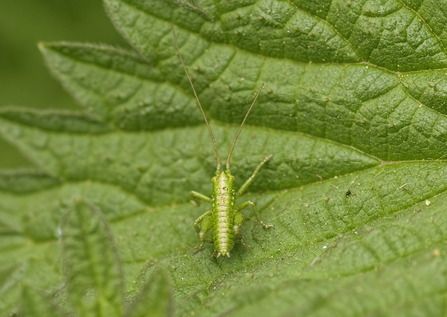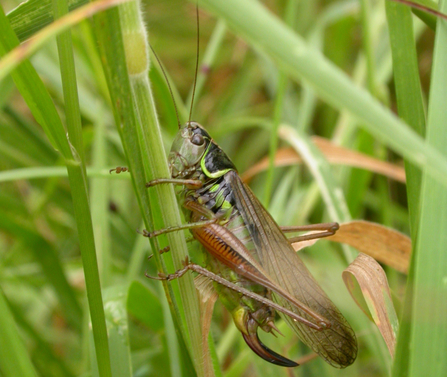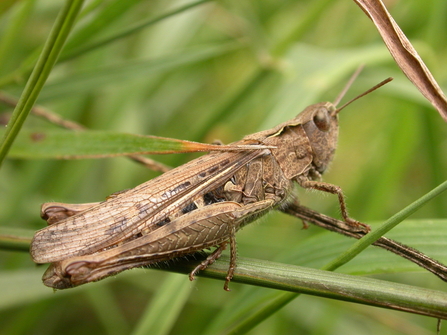Listen carefully in most wild places and you’re likely to hear the chirping chorus of crickets and grasshoppers. These songs are known as stridulations, made by quickly rubbing two body parts together — a leg against a wing, or one wing against another. There are over 25 species of these spring-legged soloists in the UK, with songs ranging from short scratchy bursts to a continuous high buzz. These unique sounds can help you identify which species are present, especially when using a bat detector to help make the sounds more audible.
The soundtrack of summer
Meadow grasshopper
Usually green, often with brown wings. Some can be brownish or even vivid pink. Compared to similar species, the lines on the shoulders are almost straight. Their song is given in pulses of scratchy rattles.
Where to see: This species isn’t fussy and can be found in almost any rough grassland.

Speckled bush cricket © John Bridges
Speckled bush-cricket
As the name suggests, this green bush-cricket is covered in tiny black speckles. They look humpbacked and have very short wings. Females can be recognised by the broad, upcurved ovipositor (tube used for laying eggs) on the rear end.
Where to see: They favour hedges, woodland and gardens.
Field grasshopper
A brownish grasshopper, though colours vary and they sometimes have a mottled or striped appearance. The underside is distinctly hairy. Another key feature is the strongly indented stripe on each shoulder. The song is a short rasping chirp, repeated at short intervals.
Where to see: Found throughout most of the UK in short, dry patchy grass, including gardens.

Roesel's bush cricket © Bruce Shortland
Roesel’s bush-cricket
A striking insect with a dark brown body, orange legs and a cream ‘u’-shape on the shoulders. Its distinctive song is a monotonous, mechanical noise, like the buzz of overhead powerlines.
Where to see: Found in damp meadows, scrub and rough grassland.


